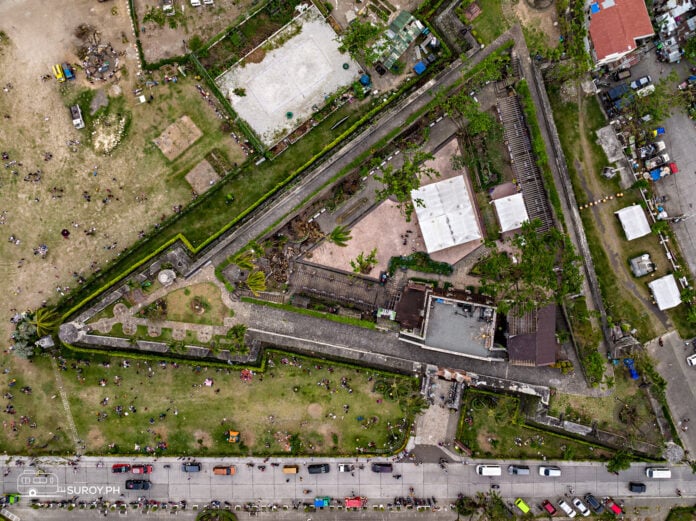Fort San Pedro in the heart of Cebu City stands as a testament to the rich historical tapestry of the Philippines. This triangular bastion, often overshadowed by its larger counterparts, holds within its walls a captivating story of Spanish colonization, local resilience, and cultural amalgamation. For history enthusiasts, architecture aficionados, or curious travelers, Fort San Pedro offers a unique glimpse into Cebu’s storied past.
What Makes Fort San Pedro Special?
Historical Significance
Fort San Pedro, or “Fuerte de San Pedro,” was established by Spanish conqueror Miguel López de Legazpi in 1565. Initially built as a wooden palisade, it was designed to defend against pirates and raiders. The structure we see today, however, took shape in 1738, evolving into a stone fortress under the Spanish government’s directive. The fort was named after Legazpi’s flagship, the “San Pedro.”
Throughout its history, Fort San Pedro served various roles. It was a stronghold during the Spanish colonial period, a refuge for Filipino revolutionaries during the Philippine Revolution, a barracks for American soldiers during their occupation, and a school during the Japanese invasion in World War II. Today, it functions as a museum and historical park, preserving artifacts and recounting stories from Cebu’s past.
Architectural Marvel
Fort San Pedro’s triangular layout is distinctive, with two sides facing the sea and the third side fronting the land. Each corner of the triangle boasts a bastion: La Concepción, Ignacio de Loyola, and San Miguel. The fort’s perimeter walls are approximately 20 feet high and 8 feet thick, built primarily from coral stones sourced from the sea.
The main gate opens into a courtyard that historically housed Spanish soldiers’ barracks and a storehouse for their arms. Visitors can still see remnants of these structures and cannons strategically positioned to defend the fort. The inner courtyard now features a lush garden, providing a serene contrast to the imposing stone walls.
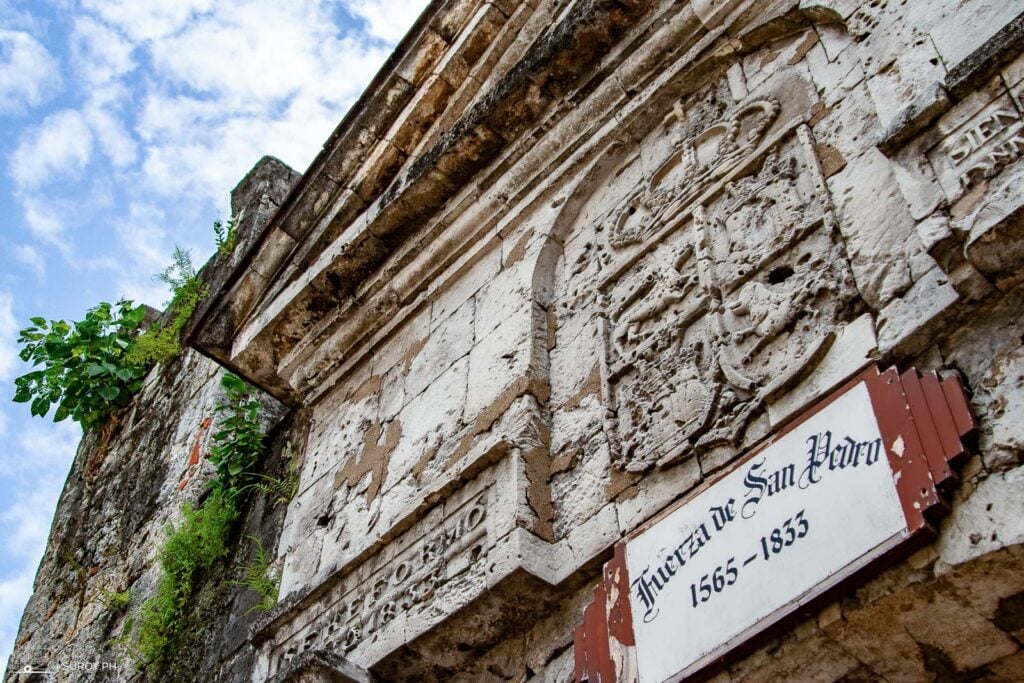
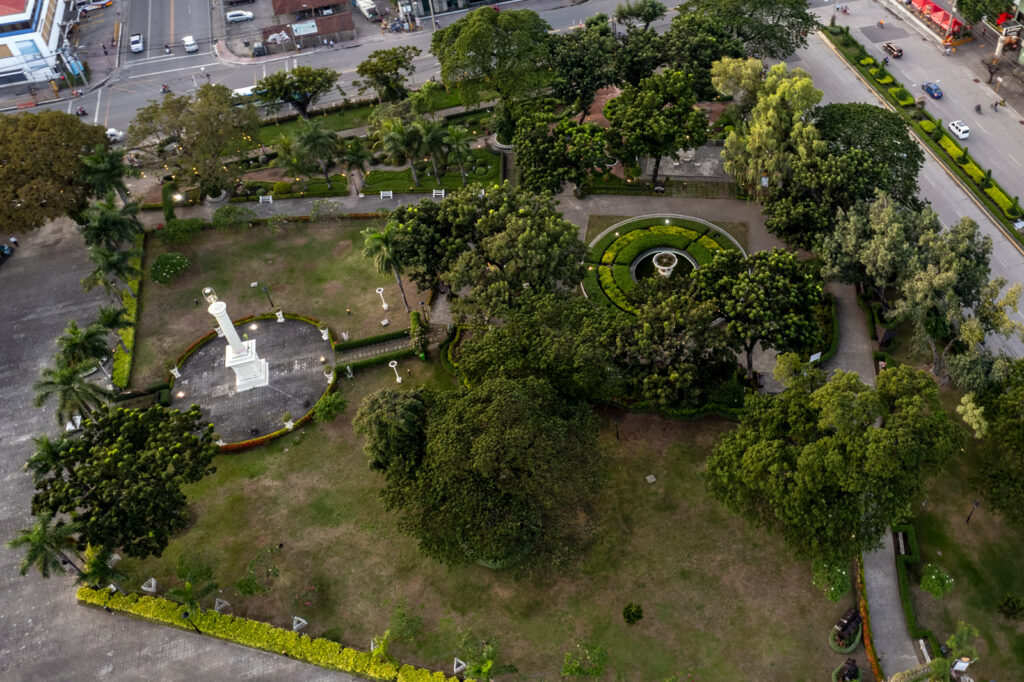

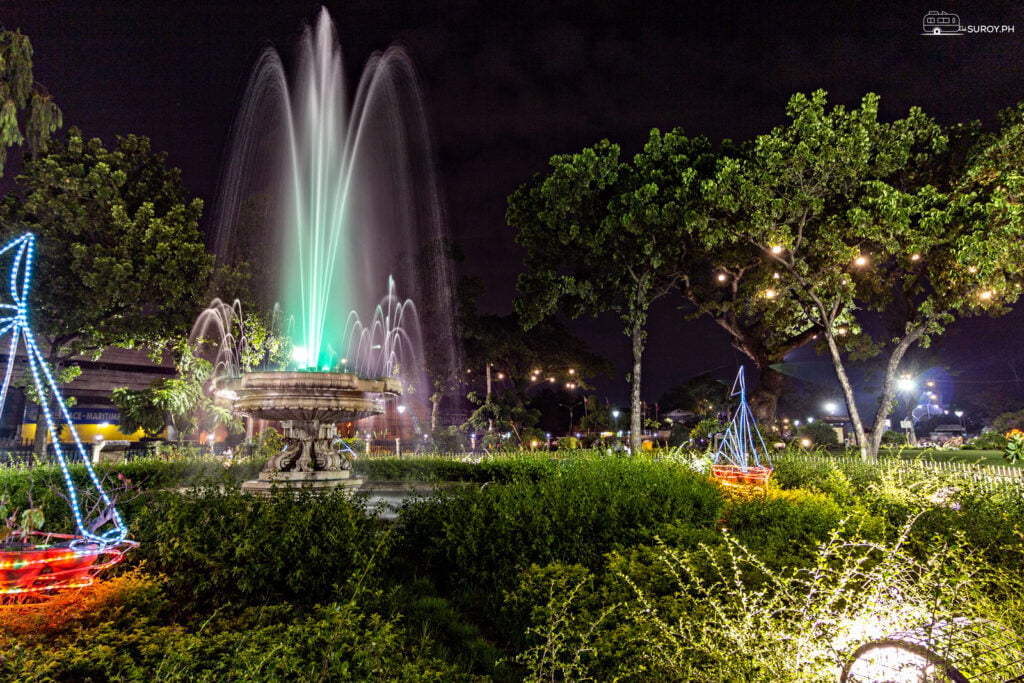
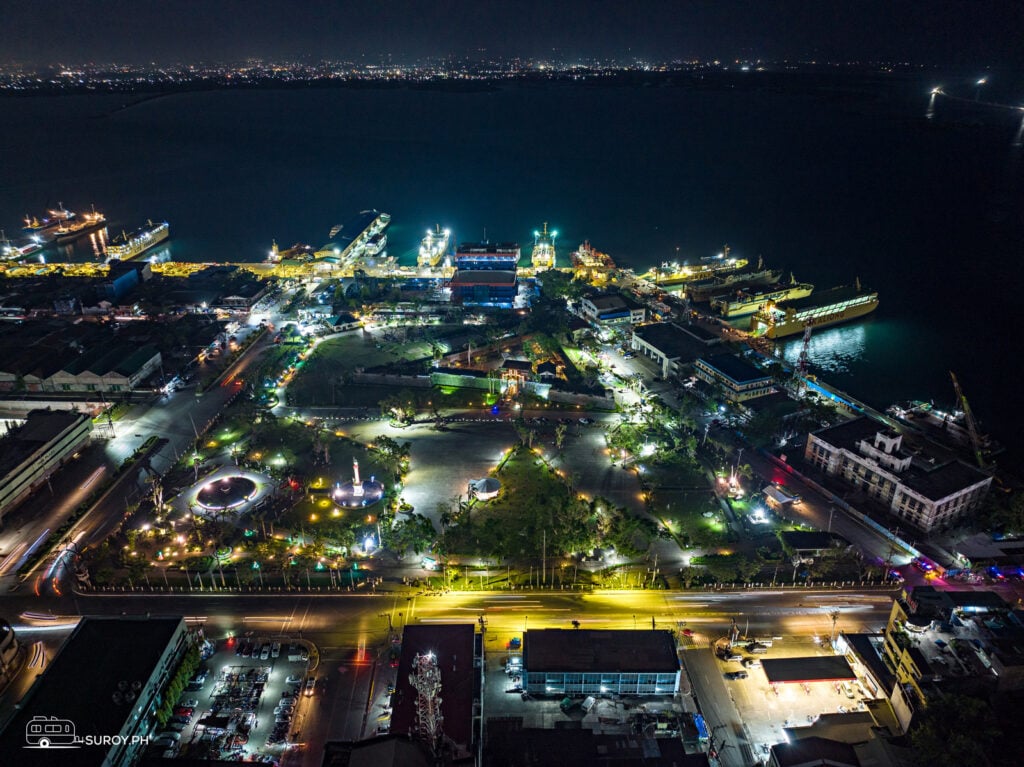

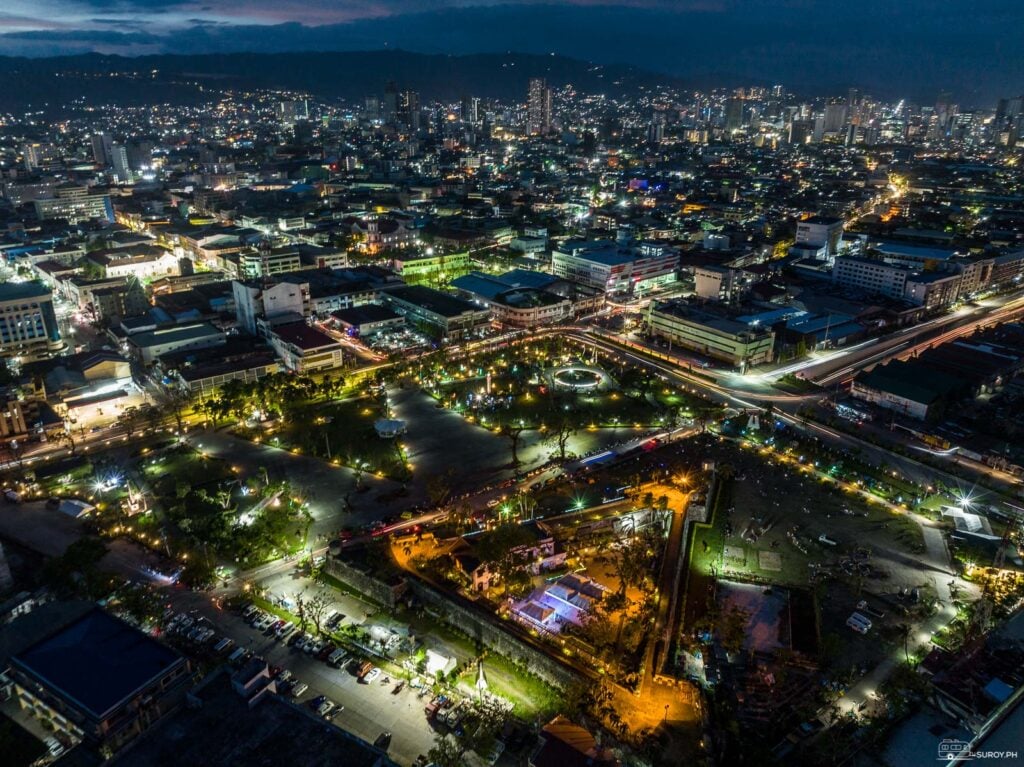
What to See at Fort San Pedro
The Museum
Fort San Pedro houses a museum showcasing various artifacts from Cebu’s rich history. The exhibits include Spanish-era documents, paintings, sculptures, and relics from the fort’s storied past. The museum provides an educational experience, giving visitors insight into Cebu’s colonial history and cultural heritage. Highlights include:
- Legazpi-Urdaneta Monument: Commemorating the arrival of Spanish explorers in Cebu.
- Spanish Artifacts: Including cannons, helmets, and navigational instruments.
- Photographic Exhibits: Depicting Cebu’s transformation through the centuries.
- Local Art: Showcasing works by Cebuano artists, adding a modern cultural layer to the historical site.
The Gardens
Surrounding the fort are beautifully landscaped gardens that offer a peaceful retreat from the bustling city. The gardens feature lush greenery, colorful flowers, and well-maintained pathways. It’s an ideal spot for a leisurely stroll or a moment of relaxation while taking in the historical ambiance of the fort.
The Chapel
Inside the fort is a small chapel, which has been restored and is still used for religious services. The chapel adds to the fort’s historical charm and offers a quiet space for reflection and prayer.
Scenic Views
Climb to the top of the fort’s bastions for panoramic views of Cebu City and the nearby port area. The elevated vantage points provide excellent photo opportunities and a unique perspective of the city’s landscape and waterfront.
Visitor Information
Entrance Fee: The entrance fee to Fort San Pedro is PHP 30 for adults and PHP 20 for students and senior citizens. The fee helps maintain the fort and its facilities.
Opening Hours: Fort San Pedro is open daily from 8:00 AM to 7:00 PM. Visitors are encouraged to arrive early to fully explore the site and avoid the midday heat.
How to Get to Fort San Pedro
Fort San Pedro is located in Plaza Independencia, near the port area of Cebu City. It is easily accessible by taxi, jeepney, or private vehicle. For those taking public transportation, jeepneys heading to Pier 1 will pass near the fort. The central location makes it a convenient stop for tourists exploring Cebu City.
Location Information
Nearby Attractions
National Museum of the Philippines – Cebu
Just a short walk from the fort, the National Museum of the Philippines – Cebu is a portal into the heart of Cebu’s past, present, and future. Whether interested in pre-colonial history, colonial art, or modern Cebuano culture, the museum has something to offer every visitor. It’s a place where history comes alive, and visitors can connect with the soul of Cebu.
Magellan’s Cross
A short walk from Fort San Pedro, Magellan’s Cross is a significant historical landmark marking the arrival of Portuguese explorer Ferdinand Magellan in 1521. The cross is housed in a small chapel and is a must-visit site for those interested in Cebu’s colonial history.
Basilica Minore del Santo Niño
Adjacent to Magellan’s Cross, the Basilica Minore del Santo Niño is the oldest Roman Catholic church in the Philippines. It houses the revered image of the Santo Niño de Cebu, a gift from Magellan to Queen Juana of Cebu. The basilica is a popular pilgrimage site and a beautiful example of Spanish colonial architecture.
Cebu Heritage Monument
A short distance from Fort San Pedro, the Cebu Heritage Monument is a stunning sculpture depicting significant events and figures in Cebu’s history. Created by renowned artist Eduardo Castrillo, the monument is a powerful visual representation of Cebu’s rich cultural heritage.
Colon Street
As the oldest street in the Philippines, Colon Street is a bustling thoroughfare filled with shops, markets, and historic buildings. Exploring Colon Street offers a glimpse into the vibrant local culture and commercial history of Cebu City.
Carbon Market
Carbon Market, Cebu’s oldest and largest public market, is a bustling hub of activity. You can find everything from fresh produce and seafood to handmade crafts and local delicacies here. Visiting Carbon Market provides an authentic taste of local life and a chance to experience the vibrant atmosphere of Cebu’s market culture. You can catch a glimpse of the iconic CCLEX from here as well.
Casa Gorordo Museum
Located in the historic district of Parian, the Casa Gorordo Museum is a beautifully preserved Spanish-era house showcasing 19th-century Filipino lifestyle and culture. The museum features antique furniture, period costumes, and religious artifacts, offering a window into the past.
Fuente Osmeña Circle
Fuente Osmeña Circle is a vibrant urban oasis offering a refreshing green space, historical significance, and a lively night market. The beautifully landscaped gardens, shaded benches, and tranquil fountain provide a peaceful retreat from the city’s hustle and bustle.
Tips for Visiting Fort San Pedro
- Guided Tours: Consider joining a guided tour for a more comprehensive experience.
- Photography: The fort is a fantastic spot for photography, especially the panoramic views from the bastions.
- Accessibility: The site is accessible to visitors of all ages, but some areas may be challenging for those with mobility issues.
- Best Time to Visit: Mornings and late afternoons are ideal for avoiding midday heat.
Conclusion
Fort San Pedro is more than just a historical relic; it is a vibrant chronicle of Cebu’s journey through the ages. Whether you’re a history buff, a cultural explorer, or simply looking to enjoy a day out in Cebu, this fortress offers a rich and immersive experience. As you walk through its ancient corridors, you’re not just observing history—you’re stepping into it. Visit Fort San Pedro and let the echoes of the past guide your journey through Cebu’s illustrious heritage.
Share your experiences and photos with us using the hashtags #suroyph and #discoveryph – we’d love to hear about your journey!
For more travel inspiration and tips, visit Suroy.ph and follow us on Facebook, Instagram, and TikTok for the latest updates and trending travel posts.

